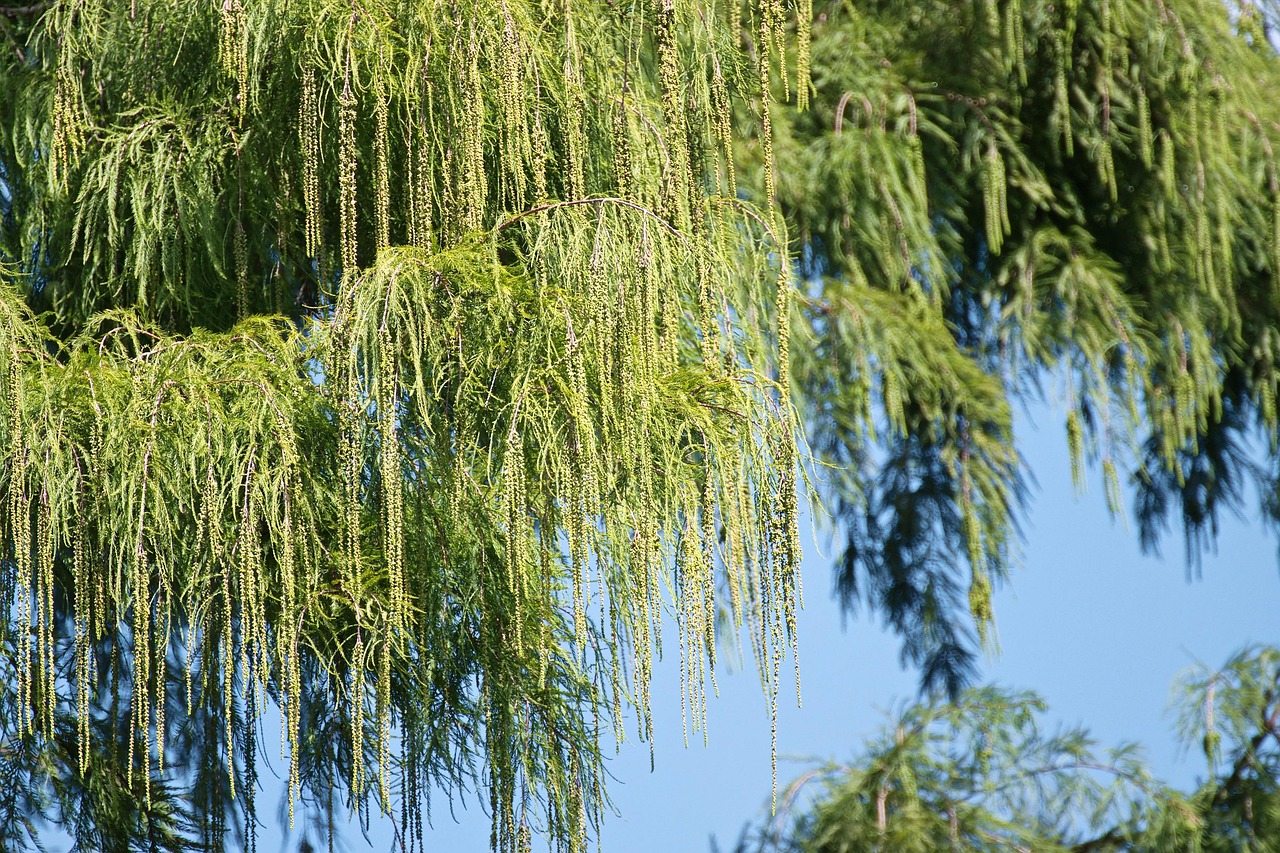The Fringe Tree, known for its unique flowers and moderate growth rate, offers numerous ornamental benefits. This deciduous tree typically grows 1 to 2 feet each year, reaching maturity in 10 to 15 years, making it an attractive choice for landscaping.
Understanding the Fringe Tree
The Fringe Tree, scientifically known as Chionanthus virginicus, is a stunning addition to gardens and landscapes. It is native to the southeastern United States and parts of Asia. The tree is renowned for its fragrant, wispy white flowers that bloom in spring, creating a striking display that attracts pollinators like bees and butterflies.

This tree thrives in various soil types, preferring well-drained soil with adequate moisture. It can grow in full sun to partial shade, making it adaptable to different garden settings. Understanding its growth rate and ornamental benefits can help gardeners make informed decisions about incorporating it into their landscapes.
Growth Rate of the Fringe Tree
The growth rate of the Fringe Tree is relatively moderate. On average, it adds about 1 to 2 feet of height each year. This growth can vary based on environmental conditions such as soil quality, sunlight, and water availability. Here are some key points regarding its growth:
- Initial Growth: The first few years are crucial for establishing a strong root system.
- Height: Mature trees typically reach heights of 30 to 40 feet.
- Width: The canopy can spread to 25 to 35 feet wide, providing ample shade.
- Time to Maturity: It generally takes about 10 to 15 years for the tree to reach full maturity.
This gradual growth makes it a suitable option for those who prefer a tree that won’t overwhelm their garden space too quickly. Regular care, including pruning and proper watering, can enhance growth rates and overall health.

Ornamental Flower Benefits
The Fringe Tree’s flowering period is one of its most appealing characteristics. During late spring, the tree is covered in clusters of delicate, fringe-like white flowers, giving it a unique and eye-catching appearance. Here are some notable benefits of its flowers:
- Aesthetic Appeal: The flowers add visual interest and beauty to any landscape.
- Fragrance: The blooms emit a sweet fragrance that enhances the garden experience.
- Wildlife Attraction: These flowers attract various pollinators, supporting local ecosystems.
- Seasonal Interest: The foliage turns a vibrant yellow in the fall, extending the ornamental value throughout the seasons.
In addition to its beautiful flowers, the Fringe Tree’s foliage provides lush green leaves during the growing season. The dark green leaves create a lovely backdrop that enhances the overall landscape design. As the seasons change, the tree continues to offer visual interest, making it a valuable ornamental choice.
Care and Maintenance
To maximize the growth rate and flowering potential of the Fringe Tree, proper care is essential. Here are some maintenance tips:

- Watering: Keep the soil consistently moist, especially during dry spells.
- Fertilization: Use a balanced fertilizer in early spring to promote healthy growth.
- Pruning: Prune dead or damaged branches after flowering to encourage new growth.
- Pest Management: Monitor for pests and diseases. Early intervention can prevent serious issues.
By following these care guidelines, gardeners can ensure their Fringe Trees thrive and produce beautiful flowers each spring. The combination of moderate growth and stunning blooms makes this tree a fantastic choice for both novice and experienced gardeners alike.
Environmental Benefits of the Fringe Tree
The Fringe Tree is not only admired for its beauty but also for its environmental contributions. Introducing this tree to your landscape can have various positive effects on the ecosystem. Below are some key environmental benefits of the Fringe Tree:
- Air Quality Improvement: Like all trees, the Fringe Tree plays a role in improving air quality. It absorbs carbon dioxide and releases oxygen, helping to mitigate pollution.
- Habitat for Wildlife: The tree provides shelter and food for various species, including birds and insects. Its flowers attract pollinators, which are essential for a healthy ecosystem.
- Soil Erosion Control: The root system of the Fringe Tree helps stabilize soil, reducing erosion. This is especially important in areas prone to runoff.
- Climate Regulation: Trees contribute to cooling the environment. The shade provided by the Fringe Tree can help lower temperatures in urban areas.
Designing with Fringe Trees
When incorporating Fringe Trees into a landscape design, it is essential to consider their size, shape, and growth habits. Here are some design tips to maximize their impact:

- Placement: Position the tree where it can be admired from a distance. Its height and width make it suitable as a focal point in gardens or yards.
- Companion Planting: Pair the Fringe Tree with flowering perennials or shrubs that have complementary colors to enhance visual appeal.
- Seasonal Harmony: Select plants that bloom at different times of the year to ensure visual interest throughout all seasons.
- Group Planting: Planting several Fringe Trees together can create a stunning display, especially when they are in full bloom.
The placement and selection of companion plants can significantly enhance the overall aesthetic of your garden. Consider the growth habits and colors of surrounding plants to create a harmonious landscape.
Pest and Disease Management
While the Fringe Tree is relatively hardy, it is still susceptible to certain pests and diseases. Understanding these threats can help you maintain the health of your tree. Here are some common issues:
- Pests:
- Scale Insects: These insects can infest the leaves and stems, sucking sap from the tree. Regular monitoring and horticultural oil treatments can help control them.
- Aphids: Small and often green or black, aphids can weaken plants by feeding on sap. A strong jet of water or insecticidal soap can manage these pests effectively.
- Diseases:
- Powdery Mildew: This fungal disease appears as white powdery spots on leaves. Proper spacing for air circulation and fungicide treatments can prevent outbreaks.
- Canker Diseases: These are caused by fungi and can lead to branch dieback. Removing affected branches and proper sanitation can minimize risk.
Regular inspection and timely intervention are crucial for managing these issues effectively. Keeping the tree healthy will enhance its growth rate and flowering potential.
Fringe Tree Varieties
The Fringe Tree has several varieties that vary in size, flower color, and growth habit. Understanding these varieties can help you choose the best one for your landscape. Below is a table summarizing some popular Fringe Tree varieties:
| Variety | Height | Flower Color | Notes |
|---|---|---|---|
| Chionanthus virginicus | 30-40 feet | White | Native to the U.S., fragrant flowers. |
| Chionanthus retusus | 20-30 feet | White | Native to Asia, slightly smaller size. |
| Chionanthus pygmaeus | 10-15 feet | White | Dwarf variety ideal for smaller gardens. |
Selecting the appropriate variety based on your space and aesthetic preferences will ensure successful growth and enjoyment of this beautiful tree.
Planting and Establishing Fringe Trees
Successfully planting and establishing Fringe Trees requires careful planning and consideration of environmental factors. Proper planting techniques can significantly influence the growth rate and health of the tree. Here are some essential steps to follow when planting a Fringe Tree:
Site Selection
The first step in planting a Fringe Tree is choosing the right site. Consider the following factors:
- Sunlight: Select a location that receives full sun to partial shade. Ideally, the tree should get at least six hours of direct sunlight each day.
- Soil Type: Ensure the soil is well-drained. Sandy loam or clay loam is ideal for Fringe Trees.
- Space: Provide ample space for the tree to grow to its mature height and width without crowding other plants.
Soil Preparation
Before planting, it is essential to prepare the soil adequately. Here are steps to enhance soil conditions:
- Testing Soil: Conduct a soil test to check pH levels and nutrient content. A pH level between 6.0 and 7.0 is ideal for Fringe Trees.
- Amending Soil: Based on soil test results, amend the soil with organic matter such as compost or well-rotted manure to improve fertility and drainage.
Planting Process
When ready to plant, follow these guidelines to ensure successful establishment:
- Digging the Hole: Dig a hole twice as wide as the root ball but no deeper than the ball itself to prevent root rot.
- Positioning the Tree: Place the tree in the center of the hole, ensuring that the top of the root ball is level with the surrounding soil surface.
- Backfilling: Fill the hole with the original soil, gently tamping it down to eliminate air pockets. Water thoroughly after backfilling.
- Mulching: Apply a layer of mulch around the base of the tree to retain moisture, suppress weeds, and regulate soil temperature.
Following this planting process will help your Fringe Tree establish a strong foundation for future growth.
Watering Requirements
Proper watering is crucial during the establishment phase of a Fringe Tree. Newly planted trees need consistent moisture to develop healthy root systems. Consider these watering guidelines:
- Frequency: Water deeply once or twice a week during dry periods. Adjust frequency based on rainfall and soil moisture levels.
- Method: Use a soaker hose or drip irrigation for deep watering, allowing water to penetrate the root zone without causing runoff.
- Signs of Stress: Monitor for signs of underwatering, such as wilting leaves or yellowing foliage.
Fertilization Strategies
Fertilizing a Fringe Tree appropriately can boost its growth rate and flowering potential. Here are some fertilization strategies to consider:
- Timing: Apply fertilizer in early spring just before new growth begins. This timing helps provide nutrients when the tree needs them most.
- Type of Fertilizer: Use a balanced slow-release fertilizer with equal parts nitrogen, phosphorus, and potassium (e.g., 10-10-10) to support overall growth.
- Application Rate: Follow package instructions for application rates based on tree size and age. Over-fertilization can harm roots and foliage.
A structured approach to fertilization can enhance the resilience of your Fringe Tree and promote vibrant blooms during its flowering season.
Seasonal Care Tasks
Maintaining a Fringe Tree requires attention throughout the seasons. Here are seasonal care tasks to ensure optimal health:
Spring Care
- Inspect for Pests: Begin monitoring for pests as temperatures rise. Early detection can prevent infestations.
- Pruning: Conduct any necessary pruning after flowering to maintain shape and encourage new growth.
Summer Care
- Irrigation: Ensure consistent watering, especially during dry spells, to keep the tree hydrated.
- Pest Control: Continue monitoring for pests and apply appropriate treatments if needed.
Fall Care
- Mulching: Refresh mulch around the base to protect roots from winter temperatures.
- Leaf Clean-Up: Rake fallen leaves to prevent disease buildup around the base of the tree.
winter Care
- Protection from Snow: If necessary, gently shake off heavy snow from branches to prevent breakage.
- Monitoring: Keep an eye on weather conditions and potential damage from ice or snow accumulation.
By adhering to these seasonal care tasks, you can ensure that your Fringe Tree remains healthy and continues to thrive year after year.
Additional Benefits of the Fringe Tree
Beyond its aesthetic appeal and environmental contributions, the Fringe Tree offers several additional benefits that make it a valuable choice for landscaping. These advantages enhance its overall desirability for homeowners and gardeners alike.
Low Maintenance Requirements
The Fringe Tree is known for its relatively low maintenance needs once established. Here are some points that highlight this benefit:
- Resilience: This tree is adaptable to various soil types and can tolerate some drought conditions once its root system is established.
- Minimal Pruning: Unlike many other ornamental trees, the Fringe Tree does not require frequent pruning, making it easier to care for.
- Natural Pest Resistance: While it can be susceptible to certain pests, the Fringe Tree generally does not face significant pest issues, reducing the need for chemical treatments.
Versatile Landscape Use
The versatility of the Fringe Tree adds to its appeal. Here are some ways it can be utilized in landscape designs:
- Specimen Tree: Its unique flowers and form make it an excellent specimen tree, drawing attention in any setting.
- Shade Provider: With its broad canopy, it offers ample shade, making it ideal for planting near patios or seating areas.
- Foundation Planting: The tree can also serve as part of foundation plantings, softening the edges of homes and buildings.
- Pollinator Garden: By planting Fringe Trees alongside other flowering plants, you can create a pollinator-friendly garden that attracts bees, butterflies, and birds.
Fringe Tree in Cultural Context
Culturally, the Fringe Tree has significance in various traditions. In some regions of the United States, it symbolizes beauty and grace. Additionally, its flowers have been used in traditional medicine for their purported health benefits. Understanding the cultural context of the Fringe Tree can provide deeper appreciation for its presence in landscaping:
- Symbolism: The delicate blooms can represent purity and new beginnings, making them suitable for celebrations and memorials.
- Medicinal Uses: Historically, parts of the tree have been used in herbal remedies for various ailments, showcasing its multifaceted nature.
Final Thoughts
The Fringe Tree stands out as an exceptional choice for both ornamental and environmental purposes. With its moderate growth rate, stunning flowers, and versatility in landscaping, it continues to gain popularity among gardeners and homeowners. When properly planted and cared for, the Fringe Tree not only enhances visual appeal but also contributes positively to local ecosystems.
By understanding its growth habits, care requirements, and environmental benefits, you can make informed decisions about incorporating this beautiful tree into your landscape. The Fringe Tree’s ability to attract pollinators, improve air quality, and provide seasonal interest makes it a valuable addition to any garden. As you consider your landscaping options, think of the Fringe Tree as a way to beautify your space while supporting nature.
In conclusion, whether you’re looking for a focal point in your garden or a tree that thrives with minimal maintenance, the Fringe Tree is an excellent option that offers lasting benefits for years to come.
